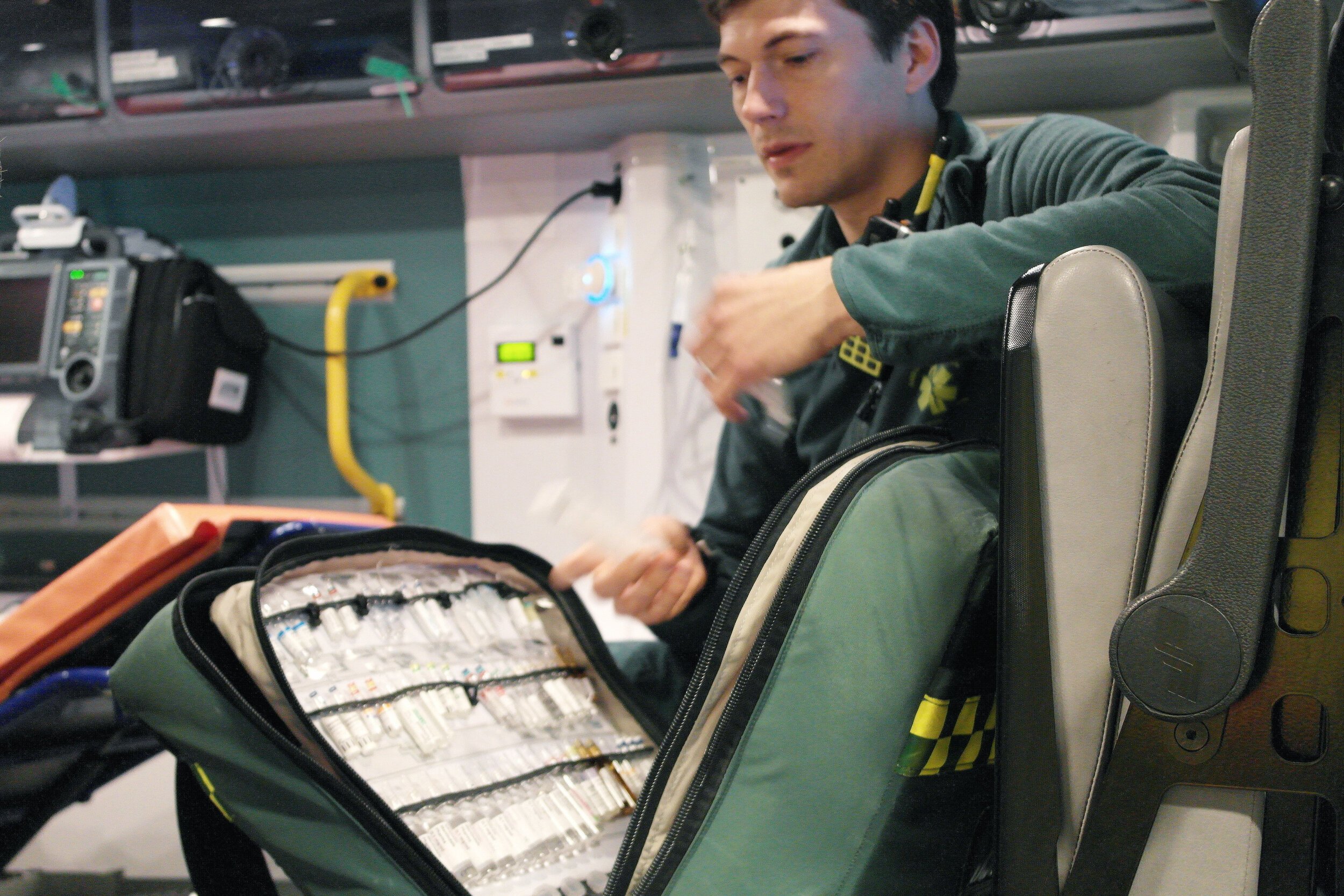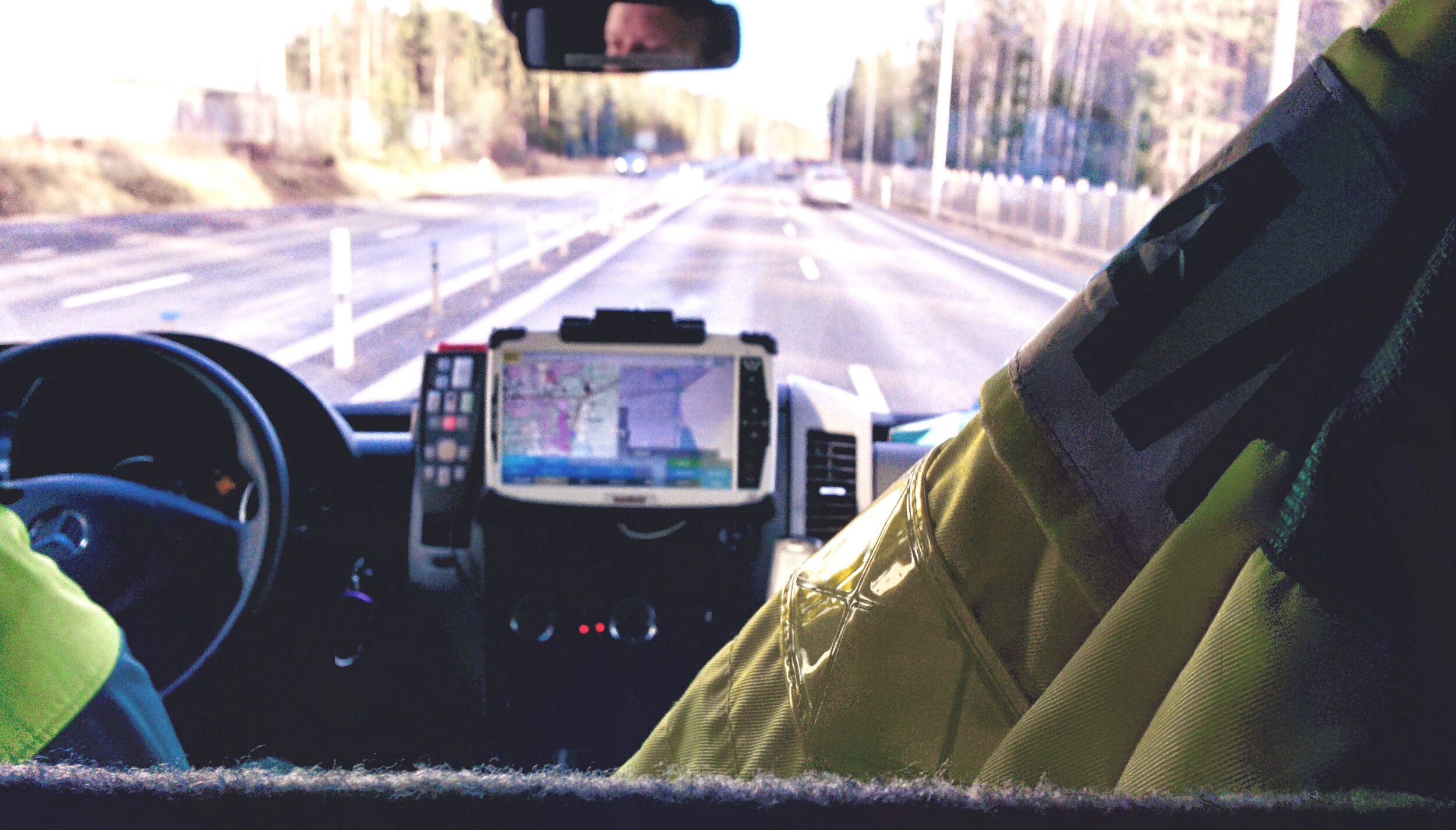
A collaborative journaling concept designed to avoid patient data loss between paramedics and hospital personnel, in collaboration with Lærdal Medical.
Design research / Concept development / UX / UI
[ UI concept]
Why
Loss of data put patient lives at risk
A Paramedics profession has evolved over time from simply transporting patients to the hospitals to performing advanced pre-hospital treatments. This increased responsibility leads to a need to multitask, which in its own increases the risk of human errors. When a Paramedic is forced to multitask he or she will always prioritise patient treatment, which is correct… But the vital data that should be continuously shared to staff in the emergency room (to prepare them for patient handover) is lost.
In short, a vital link in the emergency treatment journey is set aside - putting a patient life at risk.
Exposed to high stake emergency → Forced to multitask → Risk of human errors → Need to prioritise → Journal writing is set aside → Patient backlog is now missing → Emergency room is missing patient pre-data → Inadequate patient transition → Further treatment is compromised
What
Saving lives by saving data
The system, consisting of a software and patient monitoring patch enables early live communication between field paramedics and emergency room personnel. Relieving the paramedics of stressful yet vital tasks such as patient value monitoring while sharing early stage medical knowledge live with the emergency room is the only way to increase care quality and unite the two departments to ensuring a smooth patient handover.
A helping hand
Accompanying the digital journal is a patient patch measuring vital patient TRIAGE values continuously. Basic data is shown on the patch while detailed data is sent to the platform. By doing this the paramedic can focus on the actual treatment, get a quick overview and be relieved of a task taking up much attention in an emergency situation.
How
From SOS call to hospital discharge
Implementing a cross-departmental platform will significantly enhance patient care quality. Through this collaborative system, healthcare experts can prepare and evaluate care plans based on invaluable insights gained from previous actions.
This journal offers a single repository of accurate information throughout a patient's journey within the care system, starting from the initial SOS call where the call center can input initial case details, to the very end of care when the patient is discharged and sent home. While the concept may appear straightforward, its absence within Sweden's current healthcare system underscores the pioneering nature of this concept.
Process
A user centered design process
The project was done heavily focused on a user centred approach where the end user’s needs, wants and limitations was in focus.
We started this project as a big team to gather as much insights and information as possible. During our time with the paramedics at Umea Ambulance Station we used several methods to get a holistic understanding of their workflow and struggles, some of them being: traditional interview techniques, shadowing, hands on try out sessions, visual personas and role play. These where made to identify our personal scopes of the project.
Identifying opportunities through interviews, on-site shadowing, hands-on training, visual personas and role playing techniques.


















